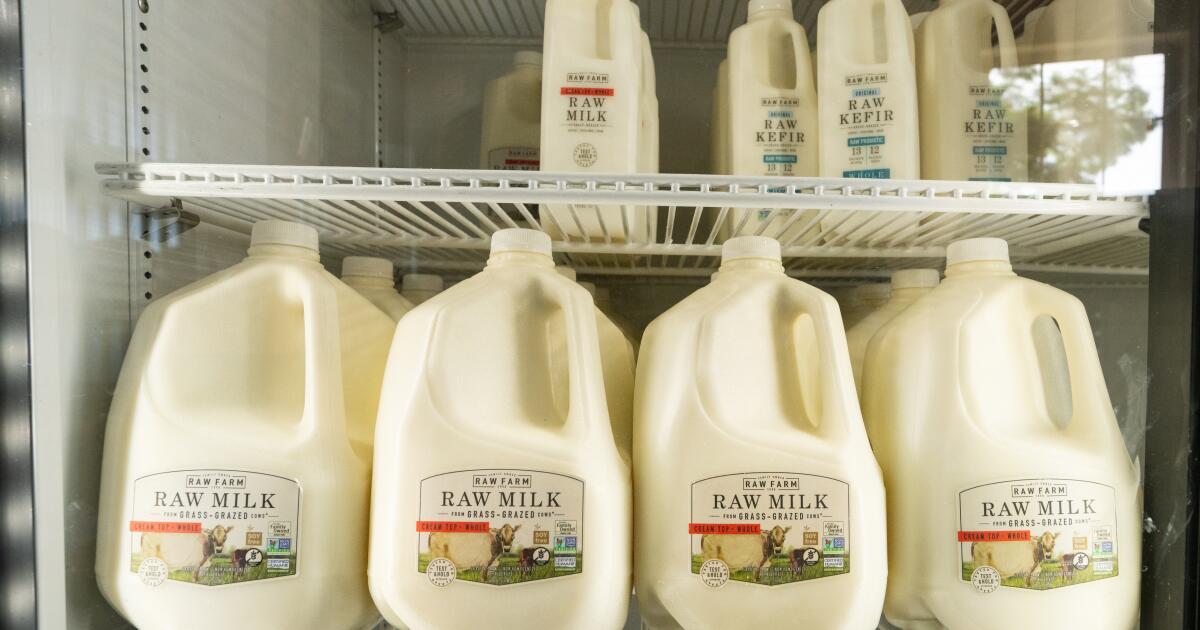Public health authorities are seeking to determine if a Marin County child stricken with bird flu could have potentially contracted the illness by drinking infected raw milk that was subject to a recall.
The case was announced on Friday, buried in a Dec. 6 Marin County health newsletter, which provided few details about the case or the county and state’s investigation.
“Since announcing multiple recalls of raw milk due to contamination with bird flu, state and local public health experts have received reports of illnesses from 10 individuals who reported drinking raw milk,” said Grant Boyken, a spokesman for the state’s public health department.
He said that initial county and state public health laboratory testing had not identified any positive bird flu infections in these individuals, but that one Marin County child who tested positive for it had recovered.
H5N1 bird flu is classified as an Influenza A virus — a group that includes most human seasonal flu viruses as well.
Additional testing is being conducted to assess whether the child was infected with bird flu or seasonal flu.
Boyken said the state, along with Marin County Health and Human Services and the Centers for Disease Control and Prevention, are working collaboratively on this investigation and “will provide updates as they are available.”
Lisa Santora, Marin County’s public health officer, didn’t immediately respond to emails and calls from The Times.
In the last two weeks, state health and agriculture officials suspended and recalled infected raw milk that had made its way to grocery store shelves throughout the state.
It is unclear if people can get bird flu by consuming the virus in milk. It is thought that acids in the stomach denature the virus, said Michael Imperiale, a microbiologist and immunologist at the University of Michigan in Ann Arbor.
However, scores of barn cats, mice and other animals have been sickened — and have died — by drinking infected raw milk. Imperiale and others note that most mammals consume food differently than people, often putting their mouths and noses into their food, potentially exposing themselves via respiratory routes, as opposed to becoming infected through the gut.
It is presumed most infected dairy workers were exposed to H5N1 via milk spray in the eye or in the nose, not as a result of drinking it.
However, handling infected raw milk — wiping it on one’s hands and then nose or eyes — could provide a potential route for infection.
Since H5N1 bird flu was first identified in 1996 in birds in China’s Guangdong province, there have been few, if any, reports of people becoming sick with the disease as a result of eating or drinking it.
Irrespective of the route of infection, Boyken noted that “pasteurization kills bacteria and viruses, like influenza, in milk” and that choosing pasteurized milk and dairy products “is the best way to keep you and your family safe.”
If confirmed, the Marin County case would be the 59th human case of H5N1 in the U.S. since the outbreak started in dairy cows in March.
It would also be the second case in California in which the source of infection has not been determined. A child in Alameda County was diagnosed with the disease last month. Genetic sequencing on that child’s virus indicates it has similarities to the strain circulating in dairy cows, known as B3.13, as opposed to the strains now moving in migrating birds.
Both strains belong to the strain of H5N1 known as 2.3.4.4b, which has infected roughly 50 species of mammals and killed millions of wild birds and commercial poultry.

